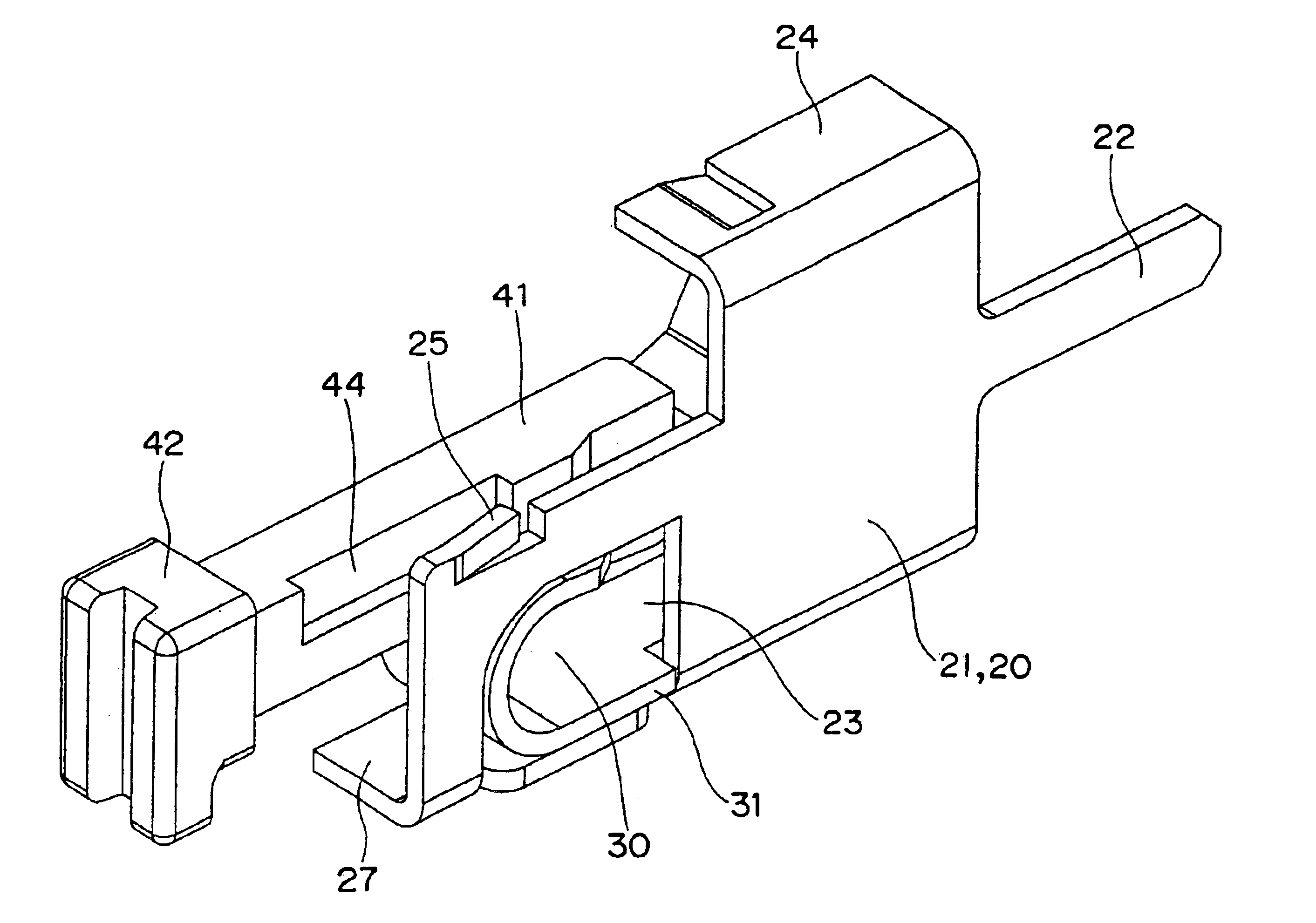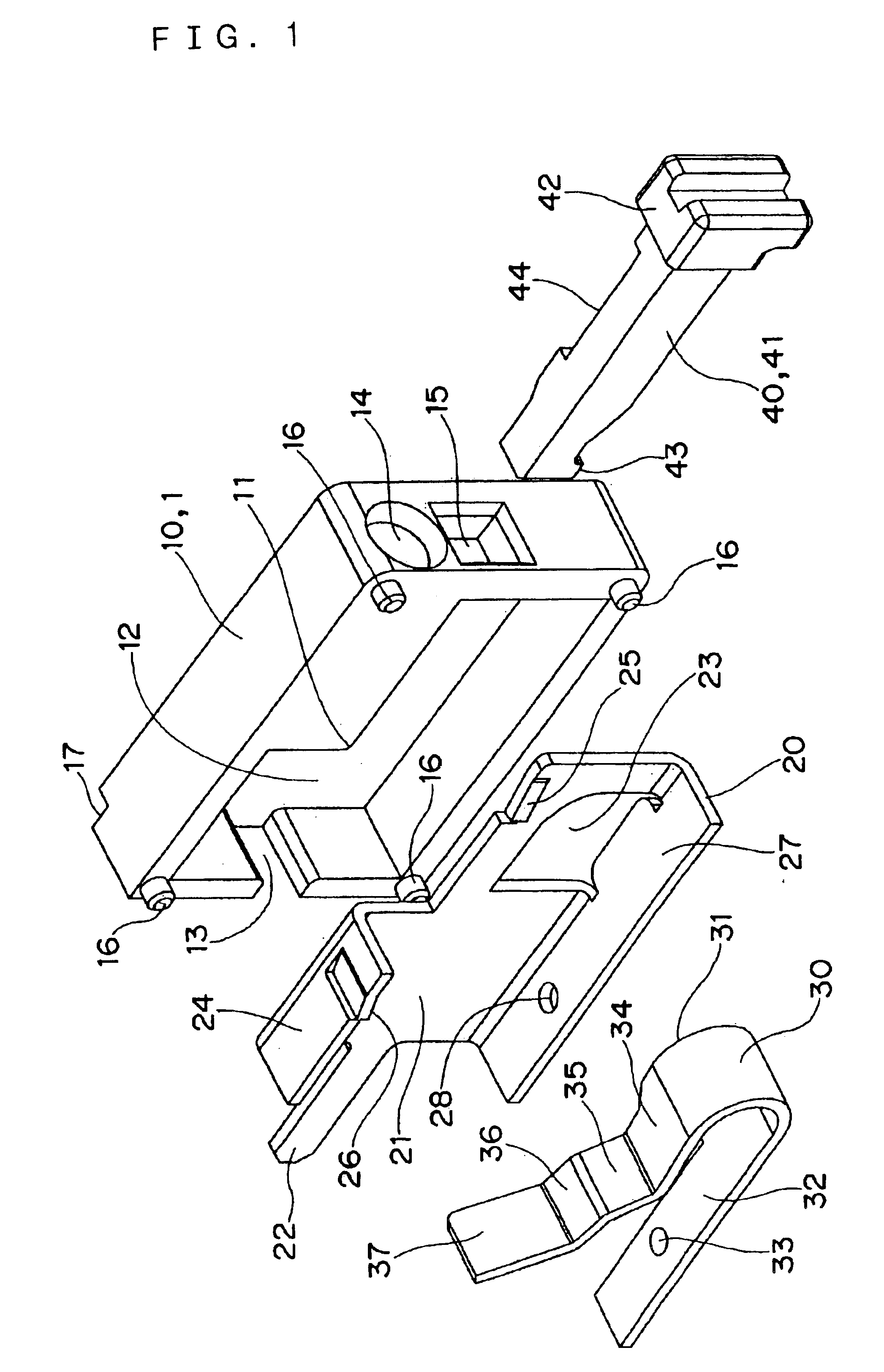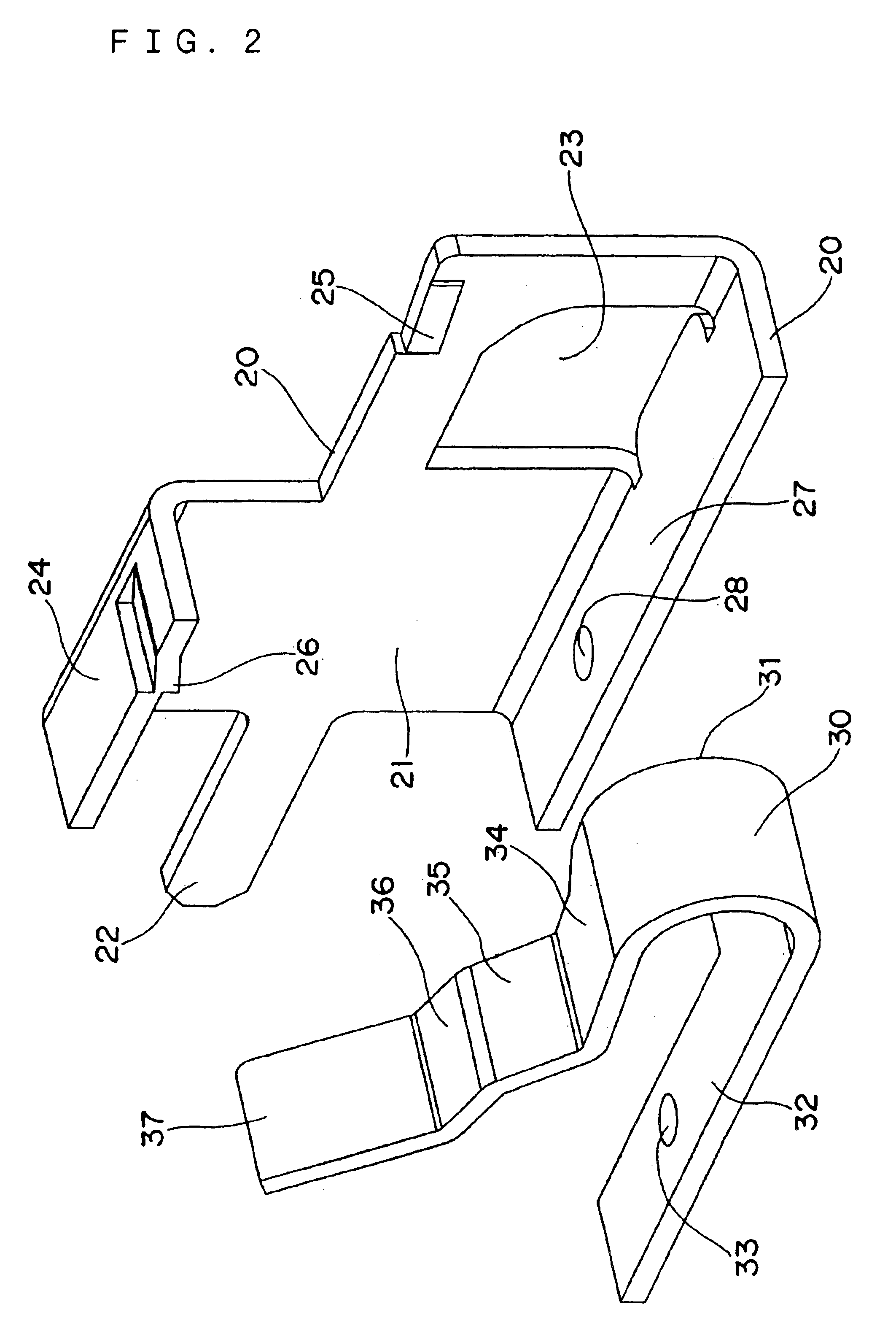Wire connector
a wire connector and connector technology, applied in the direction of contact members penetrating/cutting insulation/cable strands, electrical appliances, fastening/insulating connecting parts, etc., can solve the problems of reducing contact reliability, complex structure, and difficult miniaturization of devices, so as to enhance the availability of wire connectors
- Summary
- Abstract
- Description
- Claims
- Application Information
AI Technical Summary
Benefits of technology
Problems solved by technology
Method used
Image
Examples
first embodiment
[0109]a wire connector according to the present invention is directed to a connector 1 for wire connection which substantially comprises, as shown in FIG. 1 to FIG. 13, a casing 10, a conductive fitting 20, a leaf spring 30, a manipulation button 40, and a cover 50.
[0110]The casing 10 is a box having a rectangular parallelepiped shape and defines an approximately L-shaped recessed portion 12 by forming a position restricting corner portion 11 in the inside thereof. A notched portion 13 into which a terminal described later is fitted is formed in one of opposing side end faces, while a wire insertion hole 14 and a manipulation button insertion hole 15 are formed in the other of the opposing side end faces. Further, with respect to the casing 10, positioning projections 16 are projected from corner portions of an open-side front face, while recessed portions 17 into which the projections 16 are fitted are formed in corner portions of a back face.
[0111]When necessary, push-insertion ho...
second embodiment
[0123]A connector 1 for wire connection according to the present invention is, as shown in FIG. 14 to FIG. 16, applicable to a case in which two wires are connected substantially coaxially. Here, the connector 1 for wire connection according to this embodiment is substantially comprised of a casing 10, a conductive fitting 20, leaf springs 30, 30, and manipulation buttons 40, 40 and a cover 50.
[0124]The casing 10 is formed of a box having a rectangular parallelepiped shape and an inverse T-shaped recessed portion 12 is defined by forming a pair of position restricting corner portions 11, 11 in the inside thereof. In opposing both-side end faces, wire insertion holes 14 and a manipulation button insertion hole 15 are respectively formed coaxially. Further, with respect to the casing 10, while positioning projections 16 are projected from corner portions of an open-ended side front face thereof, recessed portions 17 into which the projections 16 can be fitted are formed at corner port...
third embodiment
[0134]The third embodiment is directed to a case in which the invention is applied to a connector 1 for wire connection which is, as shown in FIG. 17 to FIG. 22, substantially comprised of a casing 10, a conductive fitting 20, a leaf spring 30, a manipulation button 40, a cover 50 and a lever 60.
[0135]The casing 10 is a box having a rectangular parallelepiped shape and defines an approximately L-shaped recessed portion 12 by forming a position restricting corner portion 11 in the inside thereof. A notched portion 13 into which a terminal is fitted is formed in one of opposing side end faces, while a wire insertion hole 14 and a manipulation button insertion hole 15 are formed in the other opposing side end face. Further, with respect to the casing 10, positioning projections 16 are projected from corner portions of an open-side front face, while recessed portions 17 into which the projections 16 can be fitted are formed in corner portions of a back face.
[0136]The conductive fitting ...
PUM
 Login to View More
Login to View More Abstract
Description
Claims
Application Information
 Login to View More
Login to View More - R&D
- Intellectual Property
- Life Sciences
- Materials
- Tech Scout
- Unparalleled Data Quality
- Higher Quality Content
- 60% Fewer Hallucinations
Browse by: Latest US Patents, China's latest patents, Technical Efficacy Thesaurus, Application Domain, Technology Topic, Popular Technical Reports.
© 2025 PatSnap. All rights reserved.Legal|Privacy policy|Modern Slavery Act Transparency Statement|Sitemap|About US| Contact US: help@patsnap.com



